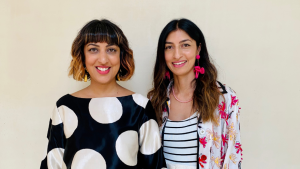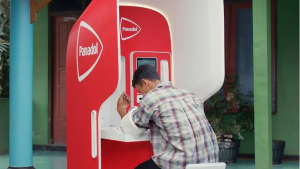Amsterdam-based designer Richard van der Laken founded the conference What Design Can Do with his De Designpolitie (Designpolice) studio partner Pepijn Zurburg in 2011.
“We just wanted to do something. We like to develop things and we thought, ‘hey there isn’t a strong and nice design conference in the Netherlands’, which is strange because the Netherlands is so well developed when it comes to design,” says van der Laken. “And if you do something it should have some kind of reason.”
The motivation behind the event became a desire to show the world what designers were capable of and to revealing the power of design to make change.
“In our last edition the huge theme called 'Humanity' popped up, and then suddenly the refugee was very important,” he says. “Our last edition was the most relevant.”
Van der Laken believes that one thing that sets designers apart is their proactive attitude. Among the projects that he points out as having had significant impact are Architecture for Humanity by Cameron Sinclair, a Design Indaba Conference speaker in 2007, and Jan Rothuizen’s project Refugee Republic – an interactive map of a Syrian refugee camp that tells the stories of its many residence, and was featured on Design Indaba in April of this year.
“We cannot save every refugee, but it is really important that we give people a face. He [Rothuizen] gave refugees a face instead of them being just a number. That’s where designers who are involved in visual communications could do much more.”
“There is always a lot of talking and reports... But designers always have this ‘do mentality’: designers are makers. So where people see a problem a designer sees a challenge. I am a designer myself, when I see something I want to react on it, and I think that is the core strength of designers.”
Of course the power of design lies in creating solutions to the basic needs of individuals: those who need shelter are provided with walls to keep them warm and dry, clean water and sanitation. But there is a level of designer-led intervention that can happen in a more metaphysical way too: graphic designer, artists and illustrators can serve a huge role in raising awareness, which will in turn lead to action.
“The power of design,” says van der Laken, “is that people can see it and understand it instantly.”
For the first time, the 2015 iteration of the What Design Can Do event incorporates a global challenge, which presents the question of what design can do for major societal issues. The challenge of how designers can help refugees has had a considerable amount of media coverage over the past few months, but design thinking should and can be applied to innumerable challenges that impact people across the world.
“The challenge this year has focused on refugees, but it could be about obesity. That’s a problem that affects countries that are transforming from second or third world. But it is not only about the third world. In the first world people getting older, depression is common. There are problems and advantages and challenges that come with that, these are somethings that designers can work on.”
Images courtesy of What Design Can Do.








